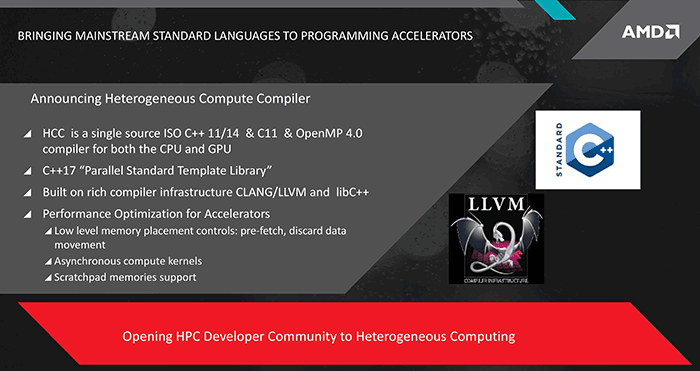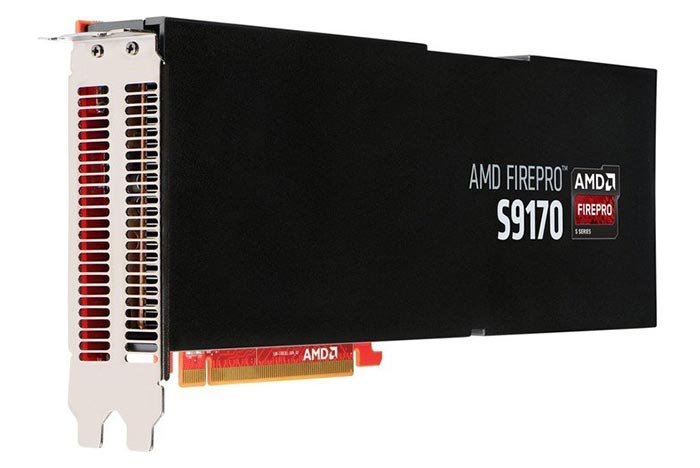SC15, the International Conference for High Performance computing (HPC) is taking place this week in Austin, Texas. AMD is there and yesterday announced what it calls the Boltzmann Initiative. In brief, so far, this initiative takes the form of a suite of three software tools that are designed to ease development for HPC systems using AMD GPUs. The tools include; a Heterogeneous Compute Compiler (HCC) using C++, a headless Linux driver and HSA runtime, and the Heterogeneous-compute Interface for Portability (HIP) to port CUDA apps to C++.

Heterogeneous Computing Compiler (HCC), for C++ development
The first part of the initiative introduces development for HPC using the popular high level C++ programming language. This could bring many more programmers into the fold to develop using AMD's heterogeneous systems. "AMD's newest offering provides the keys to more readily access our parallel computing engines – both multicore CPUs and GPUs – and to make these benefits available to the mainstream of developers across a broad spectrum of computing platforms, from embedded to supercomputing," said Mark Papermaster, senior vice president and chief technology officer, AMD.
Linux driver and HSA runtime
AMD says this new driver and runtime will focus on addressing HPC needs on Linux including; low latency compute dispatch and PCIe data transfers; peer-to-peer GPU support; Remote Direct Memory Access (RDMA) from InfiniBand that interconnects directly to GPU memory; and Large Single Memory Allocation support.

Heterogeneous-compute Interface for Portability (HIP)
This third tool is intended to bring programs written for CUDA to AMD platforms. In testing, upwards of 90 per cent of CUDA code could be automatically converted to C++, with the further 10 per cent requiring manual jiggery pokery.
As pointed out by ExtremeTech, Nvidia enjoys a much larger slice of the HPC and supercomputing market with 66 systems in the top500 list compared to 28 for Intel and just three for AMD. Nvidia has been in the market longer and spent lots of time and effort growing support for its hardware in HPC development circles. AMD is demonstrating some CUDA-based benchmarks running on AMD hardware at SC15, and said in typical code conversion cases "the performance hit is effectively zero." This initiative will greatly expand the installed hardware base available to run what were formerly exclusively CUDA-based applications.

Jim Belak, co-lead of the U.S. Department of Energy's Exascale Co-design Center in Extreme Materials and senior computational materials scientist at Lawrence Livermore National Laboratory said that AMD's HIP "enables researchers to concentrate on solving problems and publishing groundbreaking research rather than worrying about hardware-specific optimizations".
AMD Boltzmann Initiative tools will begin to become available from Q1 next year. AMD still plans to develop and support OpenCL.













